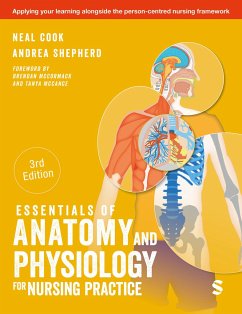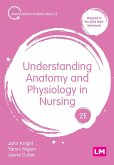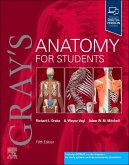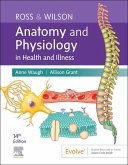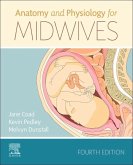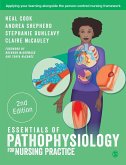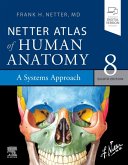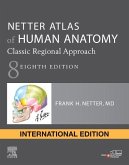- Broschiertes Buch
- Merkliste
- Auf die Merkliste
- Bewerten Bewerten
- Teilen
- Produkt teilen
- Produkterinnerung
- Produkterinnerung
Written specifically to meet the needs of nursing students and filled with detailed illustrations, this comprehensive textbook applies an inclusive, person-centred approach to the study of anatomy and physiology.
Andere Kunden interessierten sich auch für
![Understanding Anatomy and Physiology in Nursing Understanding Anatomy and Physiology in Nursing]() John KnightUnderstanding Anatomy and Physiology in Nursing32,99 €
John KnightUnderstanding Anatomy and Physiology in Nursing32,99 €![Gray's Anatomy for Students Gray's Anatomy for Students]() Gray's Anatomy for Students53,99 €
Gray's Anatomy for Students53,99 €![Ross & Wilson Anatomy and Physiology in Health and Illness Ross & Wilson Anatomy and Physiology in Health and Illness]() Anne Waugh (School of Acute and Napier Uni Continuing care NursingRoss & Wilson Anatomy and Physiology in Health and Illness33,99 €
Anne Waugh (School of Acute and Napier Uni Continuing care NursingRoss & Wilson Anatomy and Physiology in Health and Illness33,99 €![Anatomy And Physiology For Midwives Anatomy And Physiology For Midwives]() Jane Coad (Professor in Nutrition, Massey University, Palmerston NoAnatomy And Physiology For Midwives44,64 €
Jane Coad (Professor in Nutrition, Massey University, Palmerston NoAnatomy And Physiology For Midwives44,64 €![Essentials of Pathophysiology for Nursing Practice Essentials of Pathophysiology for Nursing Practice]() Neal CookEssentials of Pathophysiology for Nursing Practice100,99 €
Neal CookEssentials of Pathophysiology for Nursing Practice100,99 €![Netter Atlas of Human Anatomy: A Systems Approach Netter Atlas of Human Anatomy: A Systems Approach]() Netter, Frank H., MDNetter Atlas of Human Anatomy: A Systems Approach65,99 €
Netter, Frank H., MDNetter Atlas of Human Anatomy: A Systems Approach65,99 €![Netter Atlas of Human Anatomy: Classic Regional Approach Netter Atlas of Human Anatomy: Classic Regional Approach]() Netter, Frank H., MDNetter Atlas of Human Anatomy: Classic Regional Approach65,99 €
Netter, Frank H., MDNetter Atlas of Human Anatomy: Classic Regional Approach65,99 €-
-
-
Written specifically to meet the needs of nursing students and filled with detailed illustrations, this comprehensive textbook applies an inclusive, person-centred approach to the study of anatomy and physiology.
Produktdetails
- Produktdetails
- Verlag: SAGE Publications Ltd
- 3 Revised edition
- Seitenzahl: 680
- Erscheinungstermin: 14. Dezember 2024
- Englisch
- Abmessung: 246mm x 189mm x 36mm
- Gewicht: 1440g
- ISBN-13: 9781529626452
- ISBN-10: 1529626455
- Artikelnr.: 70945018
- Herstellerkennzeichnung
- Libri GmbH
- Europaallee 1
- 36244 Bad Hersfeld
- gpsr@libri.de
- Verlag: SAGE Publications Ltd
- 3 Revised edition
- Seitenzahl: 680
- Erscheinungstermin: 14. Dezember 2024
- Englisch
- Abmessung: 246mm x 189mm x 36mm
- Gewicht: 1440g
- ISBN-13: 9781529626452
- ISBN-10: 1529626455
- Artikelnr.: 70945018
- Herstellerkennzeichnung
- Libri GmbH
- Europaallee 1
- 36244 Bad Hersfeld
- gpsr@libri.de
Neal Cook is a Professor of Nursing and Head of School at the School of Nursing and Paramedic Science, Ulster University and a Principal Fellow of the Higher Education Academy. Neal is also President of the European Association of Neuroscience Nurses and an Executive Board Member of the British Association of Neuroscience Nurses. Neal has taught anatomy, physiology and pathophysiology to undergraduate and post-graduate nursing students across a number of courses since he commenced working in higher education. Neal is also passionate about person-centred practice, a key focus of his research, practice and educational activities. He has worked in the fields of neurosciences and critical care since registering as a nurse, becoming a specialist practitioner and subsequently moving into education and research. Neal has published clinical, research and education papers in the fields of education and neurosciences and remains very active in these endeavours. He remains clinically active in neurosciences and remains a Registered Nurse with the Nursing and Midwifery Council (UK).
Part 1 Introductory Concepts
1. Homeostasis
2. The Human Cell
3. Genetic and Epigenetic Control of Biological Systems
4. The Human Microbiome and Health
Part 2 Control and Coordination
5. The Nervous System: Control of Body Function
6. Special and General Senses: Responding to the Environment
7. The Endocrine System: Control of Internal Functions
Part 3 Preservation of the Internal Environment
8. The Digestive System: Nutrient Supply and Waste Elimination
9. Metabolism and Liver Function
10. The Respiratory System: Gaseous Exchange
11. The Renal System: Fluid, Electrolyte and Acid-Base Balance
12. The Cardiovascular and Lymphatic Systems: Internal Transport
Part 4 Support and Protection of the Internal Environment
13. The Immune System: Internal Protection
14. Skin and Temperature Regulation
15. The Musculoskeletal System: Support and Movement
Part 5 The Next Generation
16. The Reproductive Systems
17. Development through the Lifespan
1. Homeostasis
2. The Human Cell
3. Genetic and Epigenetic Control of Biological Systems
4. The Human Microbiome and Health
Part 2 Control and Coordination
5. The Nervous System: Control of Body Function
6. Special and General Senses: Responding to the Environment
7. The Endocrine System: Control of Internal Functions
Part 3 Preservation of the Internal Environment
8. The Digestive System: Nutrient Supply and Waste Elimination
9. Metabolism and Liver Function
10. The Respiratory System: Gaseous Exchange
11. The Renal System: Fluid, Electrolyte and Acid-Base Balance
12. The Cardiovascular and Lymphatic Systems: Internal Transport
Part 4 Support and Protection of the Internal Environment
13. The Immune System: Internal Protection
14. Skin and Temperature Regulation
15. The Musculoskeletal System: Support and Movement
Part 5 The Next Generation
16. The Reproductive Systems
17. Development through the Lifespan
Part 1 Introductory Concepts
1. Homeostasis
2. The Human Cell
3. Genetic and Epigenetic Control of Biological Systems
4. The Human Microbiome and Health
Part 2 Control and Coordination
5. The Nervous System: Control of Body Function
6. Special and General Senses: Responding to the Environment
7. The Endocrine System: Control of Internal Functions
Part 3 Preservation of the Internal Environment
8. The Digestive System: Nutrient Supply and Waste Elimination
9. Metabolism and Liver Function
10. The Respiratory System: Gaseous Exchange
11. The Renal System: Fluid, Electrolyte and Acid-Base Balance
12. The Cardiovascular and Lymphatic Systems: Internal Transport
Part 4 Support and Protection of the Internal Environment
13. The Immune System: Internal Protection
14. Skin and Temperature Regulation
15. The Musculoskeletal System: Support and Movement
Part 5 The Next Generation
16. The Reproductive Systems
17. Development through the Lifespan
1. Homeostasis
2. The Human Cell
3. Genetic and Epigenetic Control of Biological Systems
4. The Human Microbiome and Health
Part 2 Control and Coordination
5. The Nervous System: Control of Body Function
6. Special and General Senses: Responding to the Environment
7. The Endocrine System: Control of Internal Functions
Part 3 Preservation of the Internal Environment
8. The Digestive System: Nutrient Supply and Waste Elimination
9. Metabolism and Liver Function
10. The Respiratory System: Gaseous Exchange
11. The Renal System: Fluid, Electrolyte and Acid-Base Balance
12. The Cardiovascular and Lymphatic Systems: Internal Transport
Part 4 Support and Protection of the Internal Environment
13. The Immune System: Internal Protection
14. Skin and Temperature Regulation
15. The Musculoskeletal System: Support and Movement
Part 5 The Next Generation
16. The Reproductive Systems
17. Development through the Lifespan

